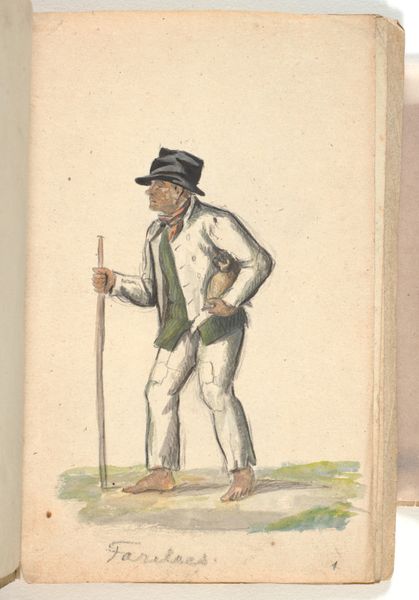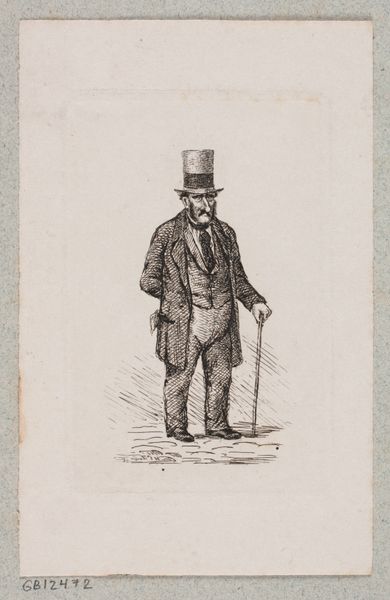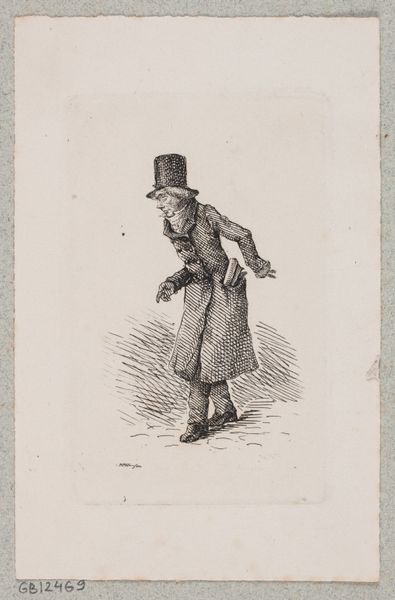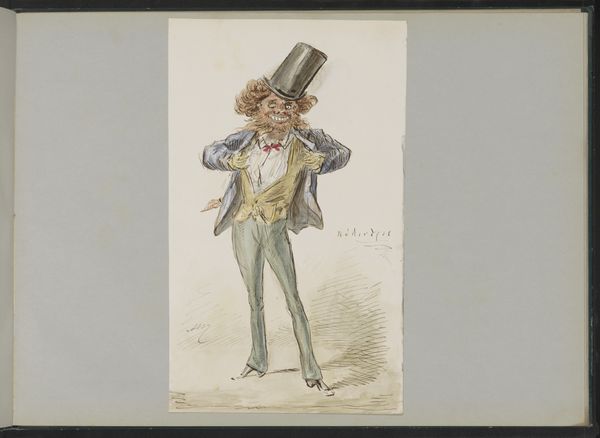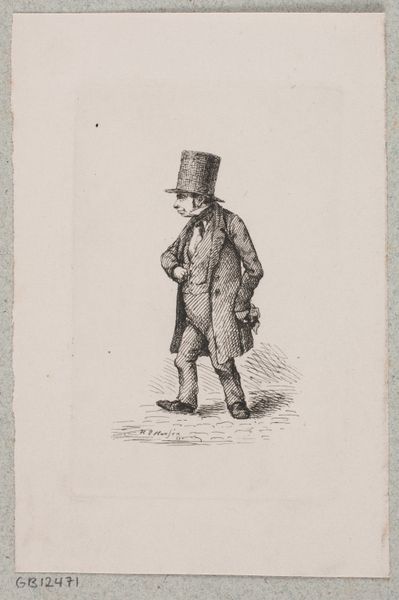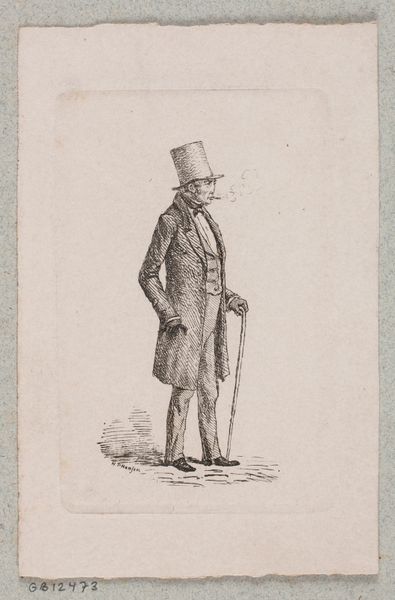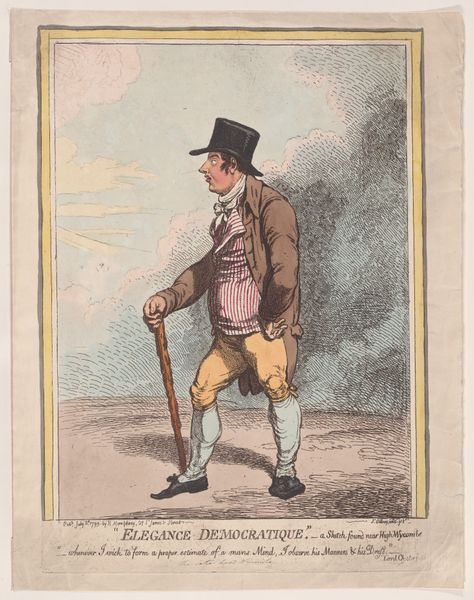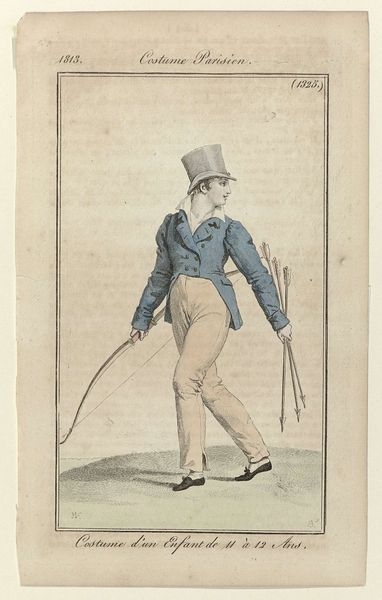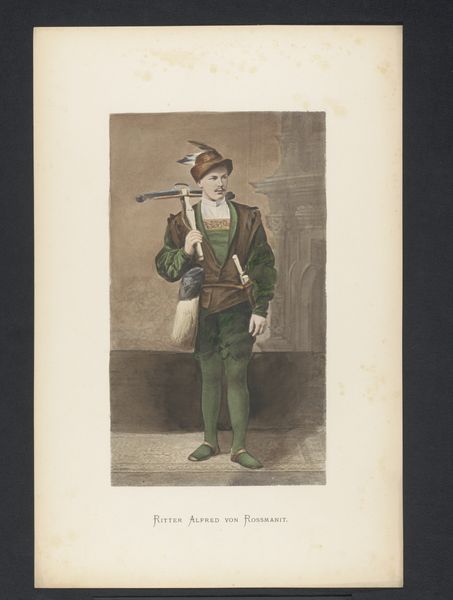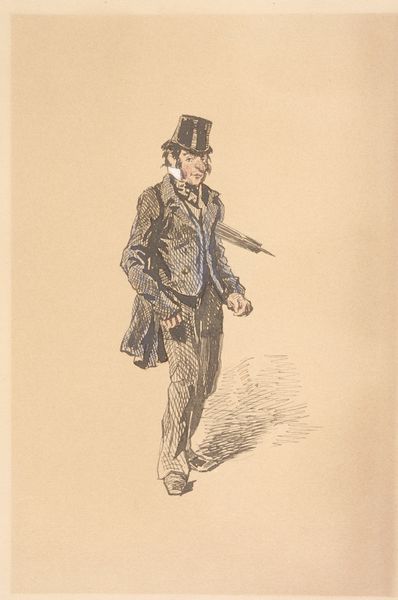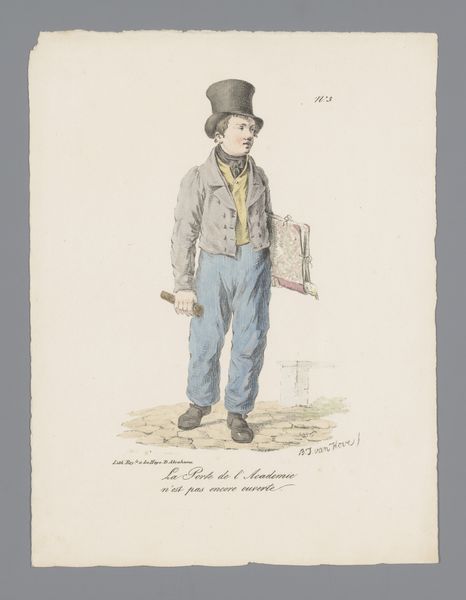
En gående mand med meget lappede bukser, kort jakke og høj hat. 1826 - 1829
0:00
0:00
drawing, coloured-pencil
#
portrait
#
drawing
#
coloured-pencil
#
coloured pencil
#
romanticism
#
genre-painting
Dimensions: 167 mm (height) x 103 mm (width) (bladmaal)
Curator: This colored pencil drawing, “A walking man with very patched trousers, short jacket, and high hat,” comes to us from P.C. Skovgaard, sometime between 1826 and 1829. What strikes you initially about it? Editor: Immediately, the clothes—specifically those heavily patched trousers—speak volumes about the material circumstances of the subject. It reads like a study in visible mending and perhaps speaks to a moment of economic hardship reflected in sartorial choices. Curator: Indeed. Skovgaard’s application of color pencil is quite interesting here. He uses a limited palette to carefully define the texture and form of each material, really drawing our attention to the act of construction, both in the image and the garments themselves. Note the crisp lines of the jacket against the almost haphazard patchwork of the trousers. It's about showing us, materially, a marked contrast, isn’t it? Editor: Precisely. And when contextualized within the period of its making, these material markers signify something quite specific— a visual representation of class disparity. The Romantic painters were also social recorders of labor, and, of course, property. Consider the socio-economic strata suggested simply by how carefully, or carelessly, someone dresses! Curator: Right. It prompts a consideration of who had access to materials and to tailors. The very labor of mending, too, reflects a particular reality of daily life and, by extension, raises questions about the value and the visibility of work. Editor: It makes us confront who is usually rendered in the art world, what statements that inclusion says. This work then encourages discussion between art history and current intersectional conversations focused around subjects like poverty. What narratives were and continue to be acceptable in popular culture? Curator: And what, then, are the ethics around rendering this figure visible to us in this way? Is there something about the Romantic era's obsession with nature and simplicity that allowed them to cast this, then, critical, eye towards labor? The high hat and jacket lend a level of dignity which speaks volumes in themselves. Editor: I agree; it's a fascinating look at both the visible and invisible labor reflected in a single image. And from the positionality of the 21st-century viewer, the artist opens further conversation as a result. Curator: Absolutely, an illustration rich in material details that spurs reflections on art, history, and broader discussions. Editor: Yes, it asks the crucial question about what matters—literally—and for whom.
Comments
No comments
Be the first to comment and join the conversation on the ultimate creative platform.
